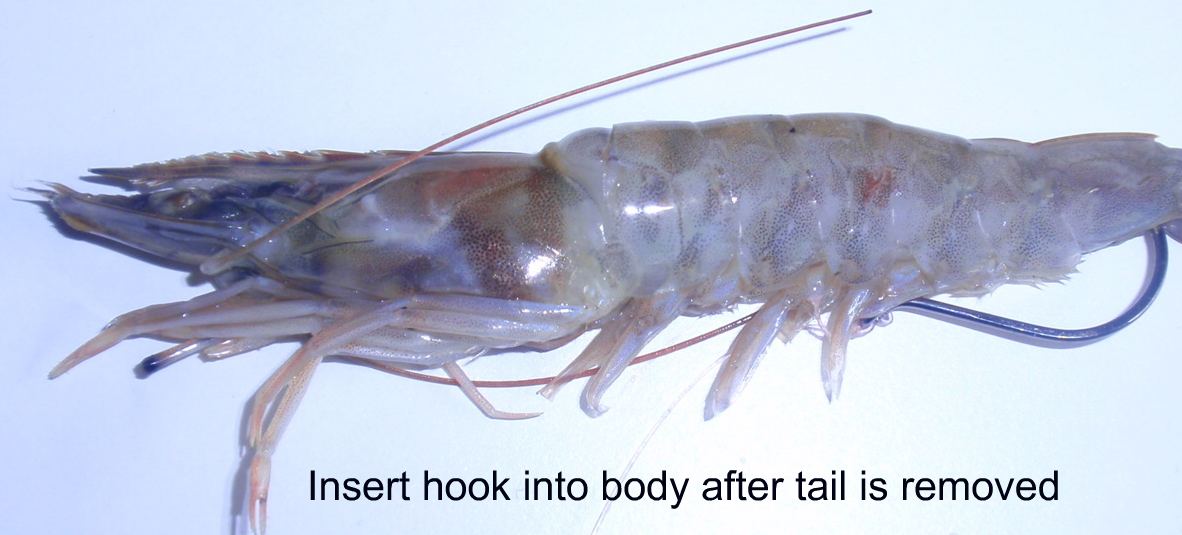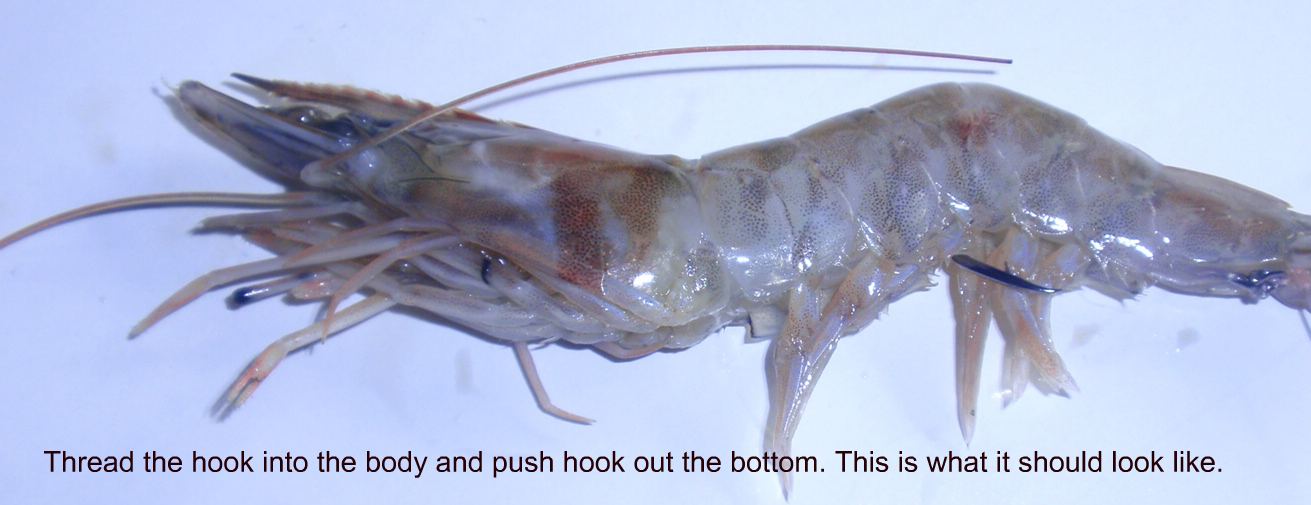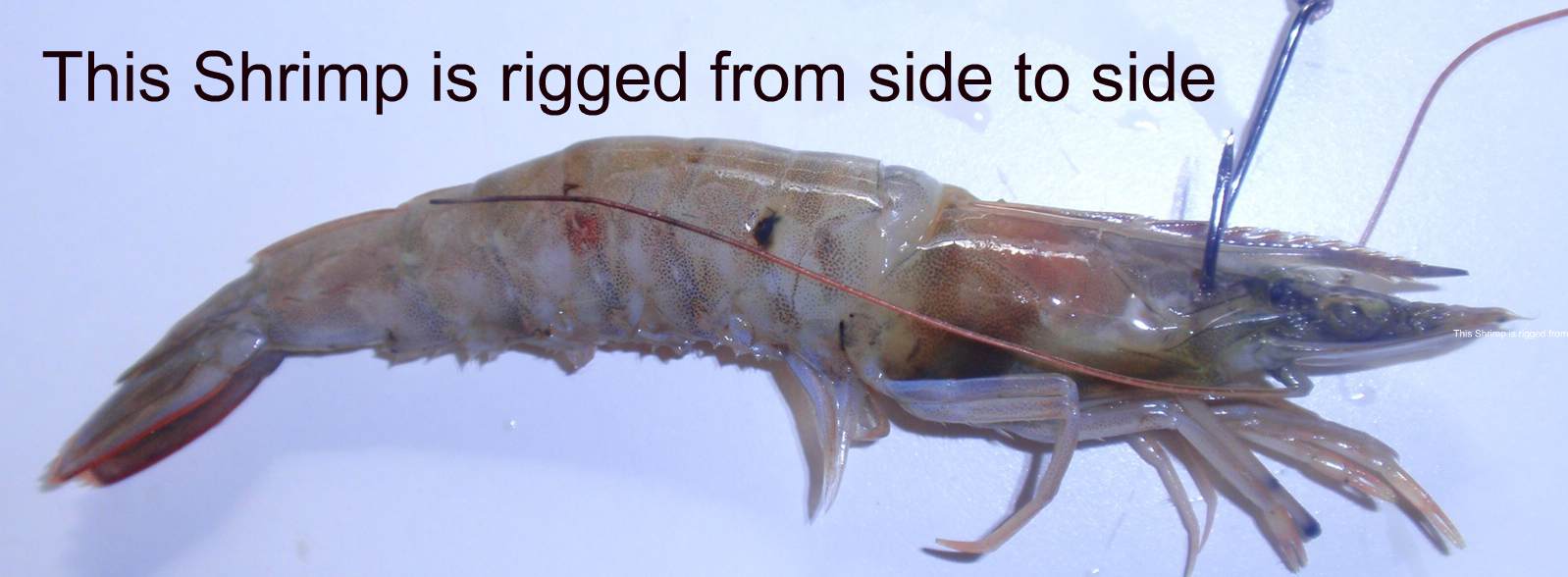Rigging a Live Shrimp
Rigging a live shrimp can be done a few different ways. Using the right technique for the style of fishing you are doing can make a big difference.
Live shrimp can be rigged weedless, with a jighead and freelined. Here are the two most common ways to freeline a live shrimp:
1.) Tail hooking a shrimp is a good way to rig your shrimp when fishing docks, rigging dead shrimp or when using a shrimp under a popping cork. This method is the most durable way to rig a shrimp.
To do this first you need to remove the tail (this will help keep the shrimp from spinning and twisting as much while casting and retrieving it).
After the tail is removed insert the hook in the body and thread the shrimp onto the hook.
After the shrimp is threaded onto the hook poke the tip of the hook out the underside of the shrimp. When doing this process try to keep the hook as centered as possible, doing this will make your shrimp be the most durable.
2.) Through the head is another very popular way and the most natural way to rig a live shrimp. I like to rig my shrimp this way if I am freelining a shrimp and letting it drift with the current.
This can be done side to side or from the bottom of the head out the top. To rig your shrimp this way insert the hook directly behind the horn. You will notice a dark spot behind the horn, this is the shrimps central nervous system and acts as the brain. So you want to avoid that.You want the hook to go between the base of the horn and the dark spot.
Rigging a live shrimp one of these two ways will be done the majority of the time.
Return to Florida Fishing Insider Home page



